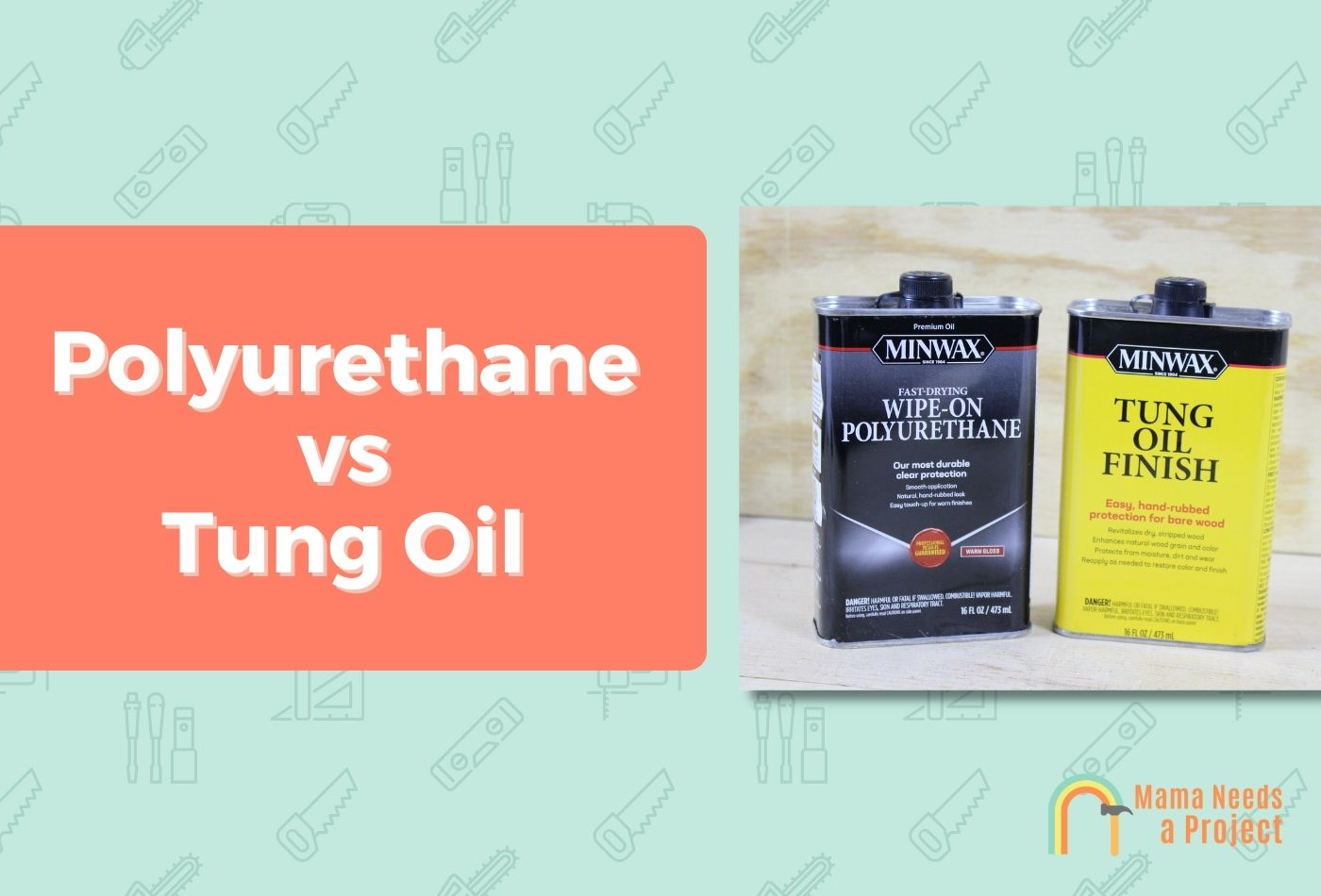Polyurethane vs Tung Oil: Which is Better? (2024)
When it comes to wood projects, there are numerous finishes you can use to add protection and get the look you want.
In this guide, I’ll compare polyurethane vs tung oil to help you decide which is best for your project. Let’s dig in.
Ultimately, it’s hard to go wrong with either finish. Here’s some of the key differences:
- Polyurethane is more durable, more versatile, and more water resistant than tung oil
- Tung oil has a better appearance, is more environmentally friendly, and can be easier to apply
Differences Between Polyurethane and Tung Oil
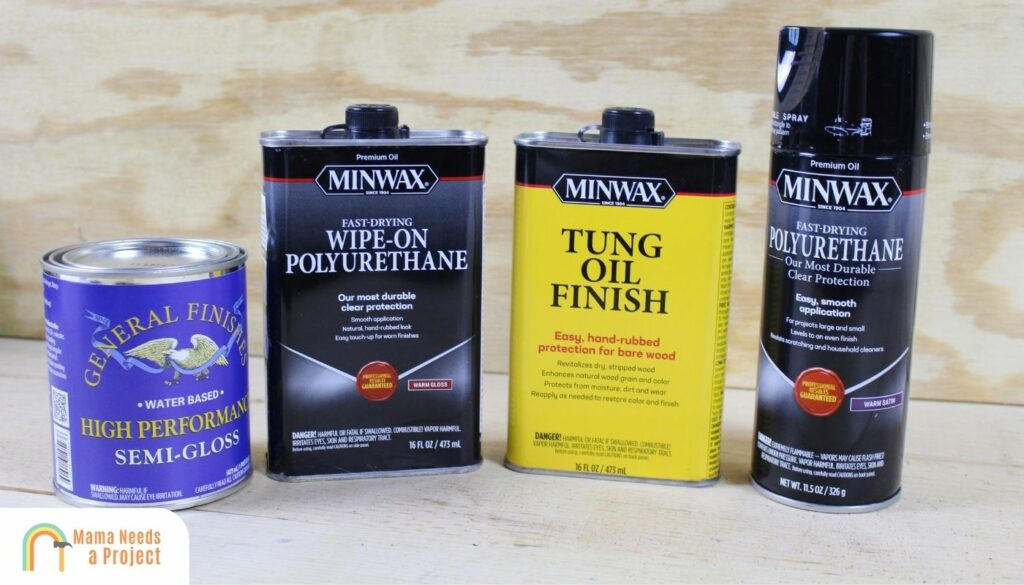
Durability
If a durable finish is what you’re after, go with polyurethane over tung oil. Even though tung oil penetrates wood, the protective film it forms isn’t nearly as strong as a multi-layer polyurethane barrier.

Polyurethane is more durable mainly because of its composition, but also because it’s applied on top of surfaces.
Unlike tung oil, polyurethane is weather-resistant, UV-resistant, heat-resistant, and corrosion-resistant. Tung oil is really only water-resistant, which is why it’s not used for exterior projects as much.
Even water-based poly, which is much thinner than its oil-based counterpart, is more durable than tung oil.
Tung oil is, however, stronger than linseed oil, so it’s not like it’s the weakest wood finish you’ll find.
It’s also important to point out that there’s a difference between pure tung oil (otherwise known as raw tung oil) and tung oil finish. The latter includes resins and other oils, so it’s significantly stronger.
Still, tung oil finish isn’t more durable than either oil-based or water-based polyurethane.
Appearance & Color
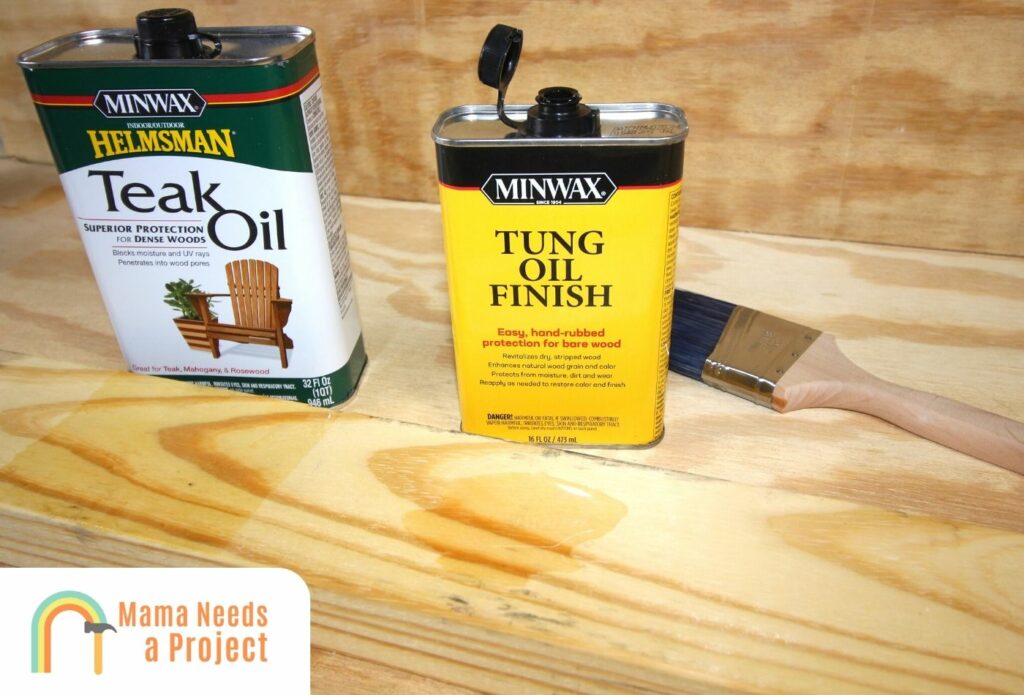
Tung oil beats out both oil- and water-based polyurethane in the appearance and color category, but that’s because one of its main purposes is to accentuate grain and make a wood surface more appealing overall.
But even though tung oil makes a range of wood surfaces look better, it shouldn’t be applied to every wood surface.
Due to its yellowish or amber tint, it shouldn’t be applied to softwoods that are near white, like black cottonwood, Atlantic white cedar, and subalpine fir.
Polyurethane, on the other hand, can make a surface look too glossy (depending on the sheen), and as it ages it tends to become cloudy.
Also, oil-based poly shouldn’t be applied to most softwoods for the same reason – its color doesn’t go well with the natural colors most softwoods feature.
Overall, if you’re looking for the best appearance – I recommend using tung oil.
Price
Real tung oil, or the oil that’s extracted from the tung tree with minimal processing, is more expensive than most polyurethanes.
The reason for the difference in prices are as follows:
- Tung oil is comprised of more expensive components, and it costs more to make.
- Tung oil is used for more niche applications, like high-end furniture or antique finishing.
- Polyurethane is more mass-produced and therefore widely available, which in part explains its lower price.
- Tung oil is non-toxic, so it can be marketed as an eco-friendly product and command a higher price.
You may find that a high-grade oil-based poly is more expensive than most tung oil products. These polyurethanes are engineered to be extra strong and long-lasting, which explains the higher price.
In general, polyurethane is cheaper than tung oil so if you’re on a budget – go with polyurethane.
Ease of Application
Generally speaking, applying tung oil is easier than applying polyurethane, mainly because tung oil can easily be wiped on.
While you can also apply polyurethane the same way, this would be challenging since polyurethane, especially oil based polyurethane, is viscous and therefore harder to spread. Minwax makes a great wipe-on polyurethane, but I found that it’s still more difficult to apply than tung oil.
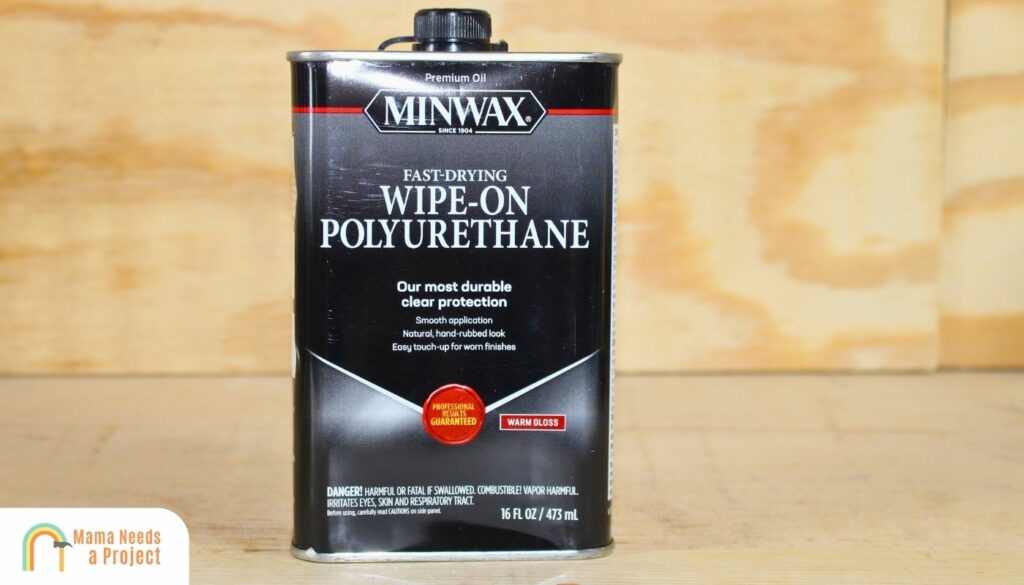
That said, applying water-based polyurethane can be challenging also because its quick-drying nature makes it hard to keep track of which areas have coated and which haven’t.
With tung oil, all you have to do is wipe it on a wooden surface and the pores will do the rest. This is one of the main reasons why tung oil is a go-to for finishing complex wood furnishings with many hard-to-reach joints, gaps, and crevices.
Getting polyurethane into hard-to-reach joints, gaps, and crevices is much more difficult, even for the most patient and skilled woodworkers, because you need bulkier applicators (brushes, sprayers, rollers.) and it doesn’t disperse as well.
Moisture Resistance
Tung oil and polyurethane are both good at sealing wood surfaces, so in this category I say its a tie.
Whereas tung oil protects wood from within, polyurethane prevents moisture from ever reaching the wood’s surface by sitting on top of the wood.
But to create a near waterproof seal, you’ll need to apply many coats of tung oil (5-7). On the other hand, just a couple of coats of oil-based polyurethane can form an effective, durable seal.
Despite being water-resistant, tung oil finish isn’t strong enough for outdoor use, as it’ll break down if it’s exposed to the rain or harsh sun for a prolonged period.
Drying & Curing Time
It takes a coat of tung oil about 48 hours to dry. So if you’re applying numerous coats, expect the finishing process to take 10 days or more to complete.
Polyurethane, on the other hand, dries somewhat quicker. Water-based polyurethane becomes semi-dry in under an hour, while oil-based poly takes five to seven hours to become semi-dry.
When polyurethane is semi-dry, another coat can be applied, so the polyurethane coating process is technically shorter.
That said, water-based poly takes nearly two weeks to cure completely, while oil polyurethane takes almost a month to cure completely.
Toxicity
Of all the finishes discussed thus far, oil polyurethane is by far the most toxic, because of the high number of volatile organic compounds (VOC).
Tung oil doesn’t contain these compounds, which is why it’s food-safe when dry. This explains why tung oil is often used on kitchen tables, wooden bowls, and cutlery.
Water-based polyurethane does have some VOCs, but not nearly as much as its oil-based counterpart, so if you want to use polyurethane and you’re concerned about toxicity – go with water based.
When to Use Polyurethane
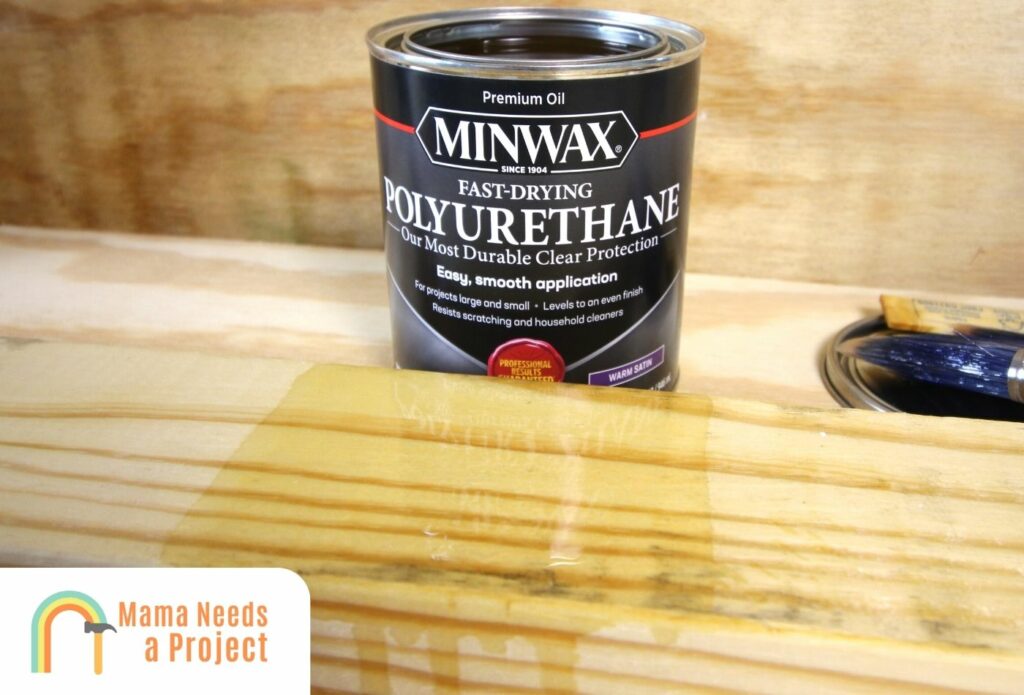
Polyurethane is great for hardwood floors, stairs, tabletops, doors, window frames, cabinets, and numerous other wood furnishings.
Outdoor wood furnishings are almost always coated with polyurethane because they hold up well against the elements.
In short, polyurethane is the finish to use when durability is what you’re after most of all. It can resist dirt, moisture, UV rays, and heat, and if applied properly it can remain durable for many years.
One of the main reasons why it’s applied to high-traffic surfaces like floors is because it’s highly durable.
When to Use Tung Oil
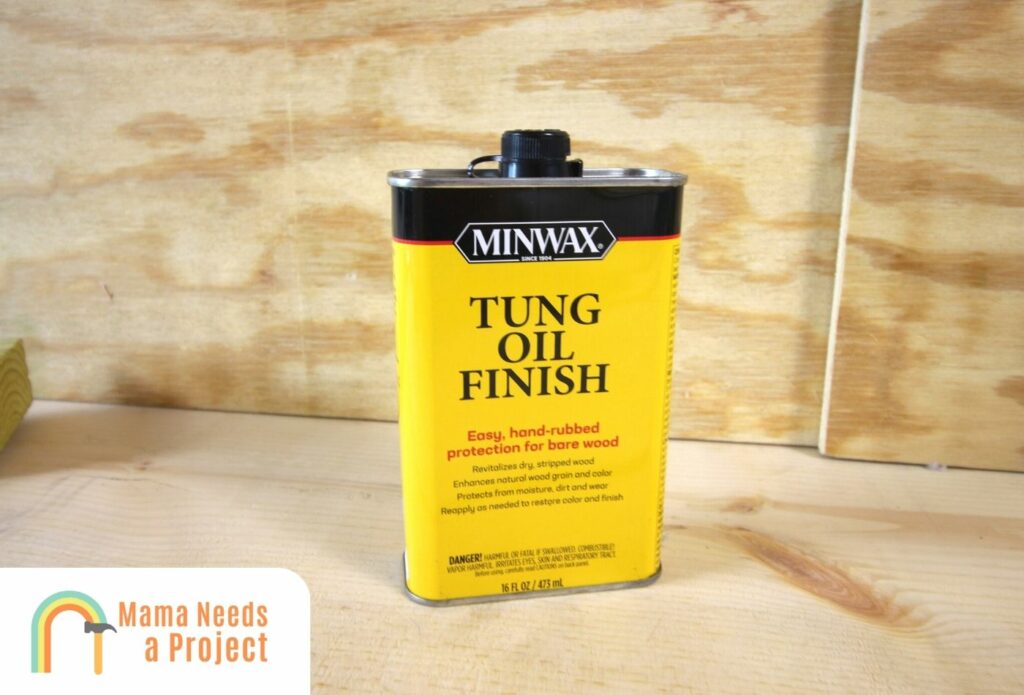
Tung oil is best for furniture, particularly high-end furniture and antiques where you want the best appearance possible.
It creates a sleek finish and accentuates wood’s color and grain, and unlike polyurethane you can count on tung oil to provide a crystal clear top layer.
In addition to furniture, it’s also used on cutting boards and other cooking equipment because it’s non-toxic yet strong.
Note: If making wood more visually appealing is more important than ensuring a durable finish, opt for pure tung oil or raw tung oil over tung oil finish.
Polyurethane vs Tung Oil for Furniture
Tung oil is best for fine furniture and wooden surfaces that aren’t at a higher risk of getting dented or scratched.
But if we’re talking about outdoor furniture, polyurethane is better, as it can resist the effects of weather, UV rays, and sudden temperature fluctuations.
So if you want to enhance the color and wood grain on an antique rocking chair, opt for tung oil over poly.
Polyurethane vs Tung Oil for Wood Floors
Polyurethane is best for wood floors because its durability is unparalleled.
Plus, since it can resist moisture and heat well, you don’t have to worry about the polyurethane cracking as the floorboards expand and contract.
Tung oil, on the other hand, isn’t good for wood surfaces like floors because it provides barely any protection. So a floor that’s been coated in tung oil is going to get scuffed and dirty quite fast.
Note: Before you apply polyurethane to a hardwood floor, understand that you’ll probably need to be out of the house for a few days after it’s applied, as living in a house with curing polyurethane can negatively affect your health in several ways.
Should you use polyurethane over tung oil?
Yes, you should apply poly over tung oil to ensure terrific durability, visual appeal, and 100% water resistance. Just make sure you apply a clear poly, i.e. a water-based version, so the accentuated wood grain and color shine through.
Can you mix polyurethane and tung oil?
No, you shouldn’t mix these two finishes. You can apply poly after tung oil, but not vice versa. And if you were to mix these finishes, you’d just get a viscous mess. If you were to leave this concoction of finishes on a wood surfaces, it’d probably just flake up or peel.
Final Thoughts
So which is better, tung oil vs polyurethane?
In my book, there’s no clear-cut winner. I’ve used both wood finishes and they each have their own benefits.
Tung oil is mainly used to improve the look and feel of wood surfaces, while polyurethane is used for its durability and sealing capability.
If you want to take advantage of what both finishes have to offer, use tung oil before polyurethane.

